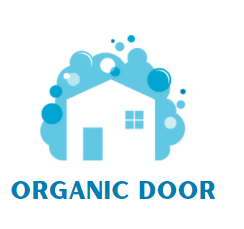When you think of a garden, what comes to mind might be a lush green space dotted with colourful flowers, or perhaps rows of vegetables ripe for the picking. But have you ever considered dedicating a part of your garden space to your pets?
An edible pet garden is a delightful and functional twist on traditional gardening, catering specifically to the dietary and sensory needs of our four-legged companions.
Here’s how you can create an enticing and safe edible space for your pet.
The Concept of an Edible Pet Garden
An edible pet garden consists of plants, herbs, and grasses that are safe and beneficial for pets to consume. It serves dual purposes: providing pets with fresh and organic dietary supplements and offering a sensory playground that appeals to their natural instincts.
Benefits of an Edible Garden for Pets
Having an edible garden is like having a pharmacy and pet oasis all in one. Your pets will enjoy all of these benefits:
- Fresh and Organic Produce: Having direct access ensures that the treats are free from chemicals and preservatives.
- Sensory Stimulation: The textures and scents can be a source of entertainment and relaxation for pets.
- Natural Remedies: Some herbs can alleviate common ailments, reducing the need for over-the-counter medications.
Getting Started: Planning Your Pet Garden
It’s important to know your pet and understand what your pet might enjoy. While cats might appreciate catnip, dogs could lean towards hardy grass or certain vegetables.
Research safe plants and always verify that the chosen plants are non-toxic to your pet. Many common ornamental and household plants are actually quite poisonous to dogs and cats. Just because something is familiar, it doesn’t mean it’s safe. Asking a nearby reputable dog merchant might be a great idea.
Finally, choose a suitable spot in your yard to place your pet garden. Depending on your pet’s nature, you might want a quiet corner or a central spot in the garden.
Must-have Plants for Cats
Here are a list of plants that your kitty will love you for:
- Catnip (Nepeta cataria): A favourite among felines, this herb can induce feelings of euphoria.
- Cat Grass (Dactylis glomerata): Helps in digestion and can deter them from chewing on other houseplants.
- Valerian (Valeriana officinalis): Known for its sedative properties in humans, it can act as a stimulant for cats.
Essential Plants for Dogs
These plants will have your dog wagging for more:
- Carrots: A crunchy treat that’s great for a dog’s teeth.
- Blueberries: Packed with antioxidants, they’re a tasty and healthy treat.
- Parsley: Not only does it freshen your breath, but it also contains vitamins beneficial for dogs.
- Lavender: The scent can have a calming effect on dogs, especially if they are anxious.

The Best Plants for Bird Enthusiasts
These plants are great if you want to attract more birds to your home:
- Millet: Often found in birdseed, this can be grown fresh for your avian friends.
- Kale: A nutritious green, great for many bird species.
- Marigolds: These add colour to your garden and are edible for birds.
Plants to Avoid
It’s crucial to be aware of plants that can be toxic to pets. Some important ones to remember are the following:
For cats: Lilies, Poinsettias, and Tulips.
For dogs: Grapes, Onions, and Chocolates (cocoa plants).
Of course, always consult with a vet before introducing new plants to your pet’s diet.
Maintenance of Your Edible Pet Garden
Whatever’s yummy for us and our pets tends to be yummy for a host of other pets too. Here are some ways to keep your garden healthy and thriving:
- Natural Pest Control: Opt for natural insect deterrents over chemical ones to keep the garden organic.
- Regular Trimming: Ensure the plants remain healthy and at an accessible height for your pets.
- Hydration: Regular watering keeps plants juicy and appealing.
Final Words
Creating an edible pet garden is more than just cultivating plants; it’s about fostering a bond between your pets and nature. It’s a testament to the holistic approach of pet care, emphasising the well-being and happiness of our furry (or feathered) family members.
So, the next time you see a patch of vacant land or an empty pot, consider planting something special for your pet. They might just thank you with a purr, wag, or chirp!



